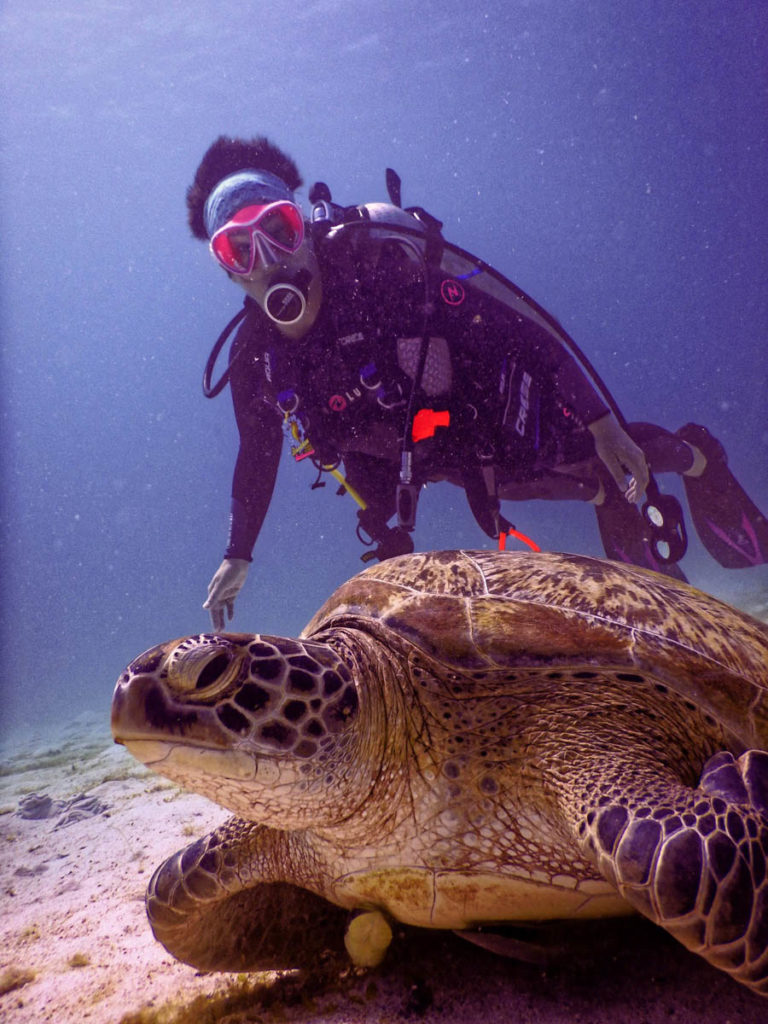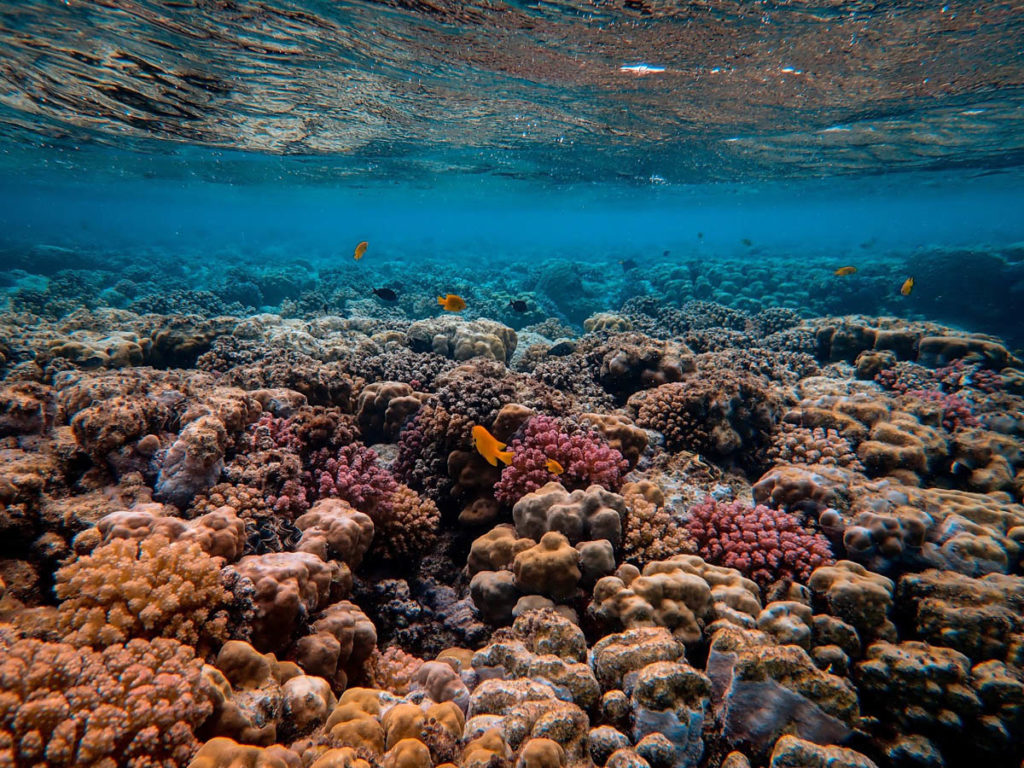The beginning of 2019 turned out to be a cold and wet one for me in the UK. This led to me booking a 4 month trip around South East Asia Oct-Jan to soak up some sun and check out the spectacular diving opportunities that are on offer in the region. My trip has so far taken me scuba diving and free diving in the Philippines, Indonesia and Thailand – I’m currently writing this article whilst lounging on a beach in Koh Phangan!
A major focus of my trip was to spend a month in the Gulf of Thailand, specifically at a group of islands just off the East coast of the mainland. This would allow to visit Koh Tao for a few weeks. Koh Tao is one for the world’s best destinations to qualify as a PADI diver; I did my qualifications here a few years back. Koh Tao ranks 2nd on the number of annual diver certifications issued, it’s second only to Cairns in Australia.
Every-year thousands of travellers and diving enthusiasts ranging from beginners to pro come to Koh Tao to check out the coral reefs surrounding the island. Popular marine life includes an abundance of tropical fish, huge green turtles and a cove which is home to hundreds of reef sharks. The diving courses on offer are highly affordable, the teaching standards are very high, dive sites are everywhere and the conditions are great for newbie divers. And after a long day of diving under the water, the island also boasts beautiful beach bars full of great local food and drinks for you to unwind. What more could you ask for?
What diving certification should you go for?
Around the world there are over 50 scuba diving training certifications, in Koh Tao the 2 most popular is the Professional Association of Dive Instructors (PADI) or Scuba Schools International (SSI).
Both training schools has its own standards, rules and teaching material but at the end of the day you’ll be taught how to use the same equipment, learn how to dive properly and see the same wonderful sites Koh Tao has to offer.
PADI
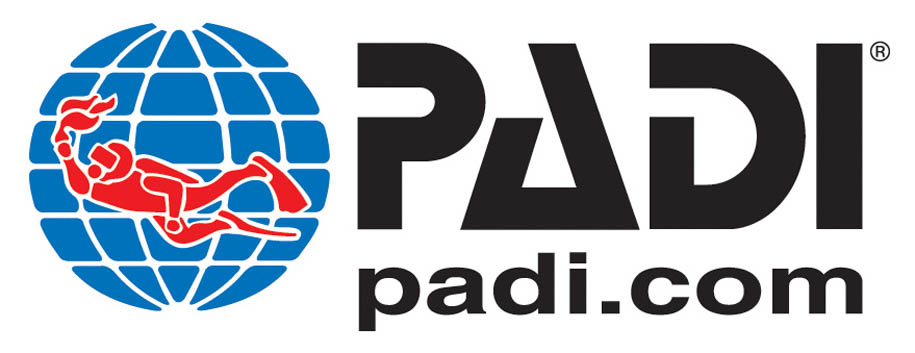
PADI holds the crown of being the world’s leading scuba dive trainer. It carries out roughly 1 million certifications per year.
The reason I chose PADI is that anyone who wishes to be a dive instructor (something I may venture into in the future), can do so independently. Whilst an SSI dive instructor has to operate out of an SSI registered training school. So if you ever see yourself as teaching others how to dive or want to have the possibility under your belt then go for PADI.
SSI

Koh Tao is said to be the cheapest place in the world to get your diving certification – if you’re on a budget or backpacking on a shoestring around Thailand then you’ll get more for your Thai Baht if you go with SSI. Typically an SSI course in Koh Tao will cost you about 10% less than a PADI course.
Which ever scuba trainer you decide to go with, make sure you check out the reviews and terms of both courses and go with the one you feel most comfortable with! Both are a great choice.
What will the courses include?
The first course you’ll take as a diver on Koh Tao is your open water certification course. This is what I took whilst backpacking the Gulf of Thailand years ago, many of my friends stayed longer and did stints working at the dive schools!
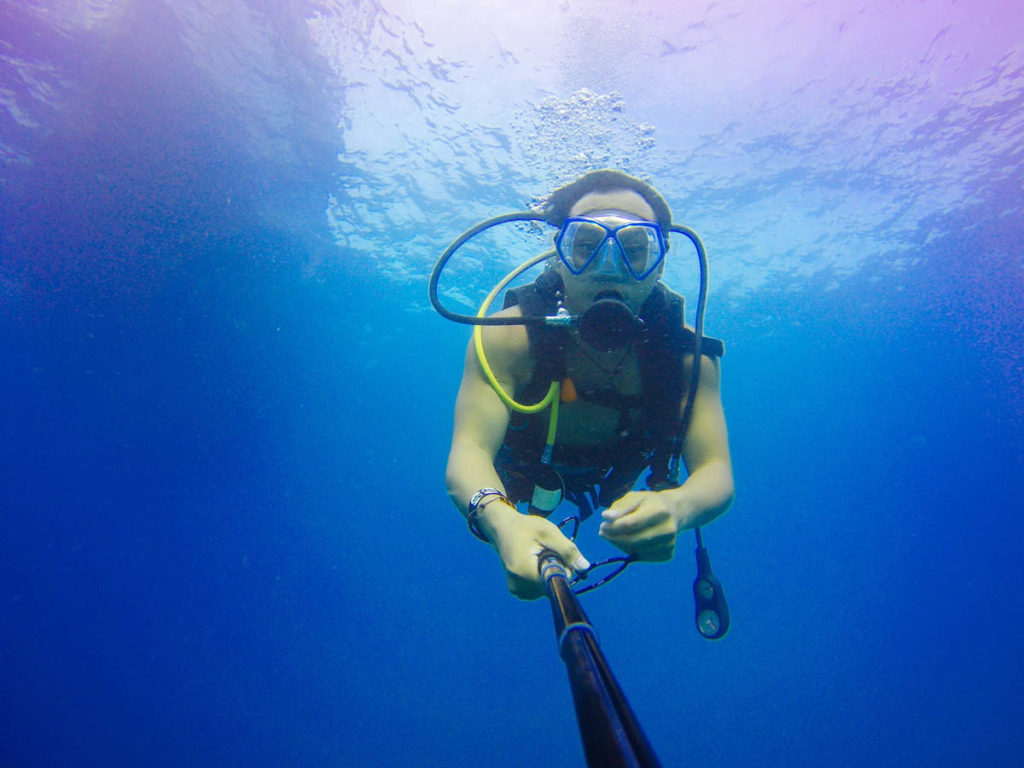
The courses may slightly differ between dive schools but here is a rough outline of what you can expect:
Day 1: The first day is usually spent in the classroom filling out your paperwork, sorting your dive insurance, watching videos and learning about orientation.
Day 2: The second day usually begins in the classroom again where you will look over the equipment, learn what everything is and how to use it. The second ha;f of the day is spent either in a swimming pool or shallow dive site allowing you to work on your basic diving skills and get more used to the equipment.
Day 3: If more classroom work is needed then a short morning may be spent in the classroom, if not you’ll get out for your first open water dive – maybe your 2nd if you have time.
Day 4: You will complete your 4 open water dives, venturing out deeper into the ocean, exploring the sights around Koh Tao. If you’re lucky you might see green turtles, reef sharks and whale sharks! After your dives, you’ll be required to sit your final exam – don’t be put of by the exam, it’s not difficult if you have listened attentively throughout the course – you will make it!
After your course, you’ll officially be able to dive anywhere in the world with another certified diver to a depth of 18 meters!
Remember Koh Tao is one of the best places in the world to learn how to dive, you don’t have to stop there with the open water. Since first arriving in Koh Tao, I’ve taken many courses on scuba diving and most recently a course to learn how to free dive.
How much will the course cost?
Koh Tao is said to be the cheapest place in the world to get dive certified. Although it differs slightly between dive schools, you’ll be expected to pay roughly 9000 to 11000 Thai Baht ($300-$380) for an open water course – This usually includes free drinks and food throughout the days you’ll be diving on (it can also occasionally include accommodation – so do some digging!)
How to choose a dive school?
I was faced with this issue when I first arrived in Koh Tao, I initially went with the first dive school my hostel recommended. After visiting the dive school I quickly realised no-one there spoke English very well, so I knew learning how to dive there may be an issue for me. It definitely pays to do your due diligence and look around before committing to a course. I now get along with the dive instructors very well and return most years to dive along side them.
It’s difficult for me to recommend exact dive schools as there are so many in Koh Tao (over 70!) and they cater to different languages. I would ask yourself the following questions to make sure you get a dive school that suits you:
- Does an instructor speak my main language? There are dive schools across Koh Tao for many languages, there is dedicated instructors for English, French, Finish, Chinese, Italian and many more.
- Will my first dives be taken in a pool or the ocean? If you’re less confident with your ability in the water, then look for somewhere that allows you to practice your first time with the equipment in a pool.
- Is the equipment in good condition? It definitely doesn’t hurt to ask to check out the equipment before booking a dive. Due to the popularity of diving in Koh Tao, it also holds a good track record of keeping everything in good condition.
- How qualified is my instructor? Take comfort in knowing the instructors are well ‘policed’ in Koh Tao and regularly have to prove they are qualified.
- How many people are in my group? You may prefer more or less, it’s personal preference. Do you want more 1-on-1 time with the instructors or do you want to meet new people? My first time in Koh Tao was whilst backpacking Thailand, so I went for a larger group to meet more travellers – we ended up all good for food and drinks after our course and I’ve remained in touch with most since!
What are the best dive sites around Koh Tao?
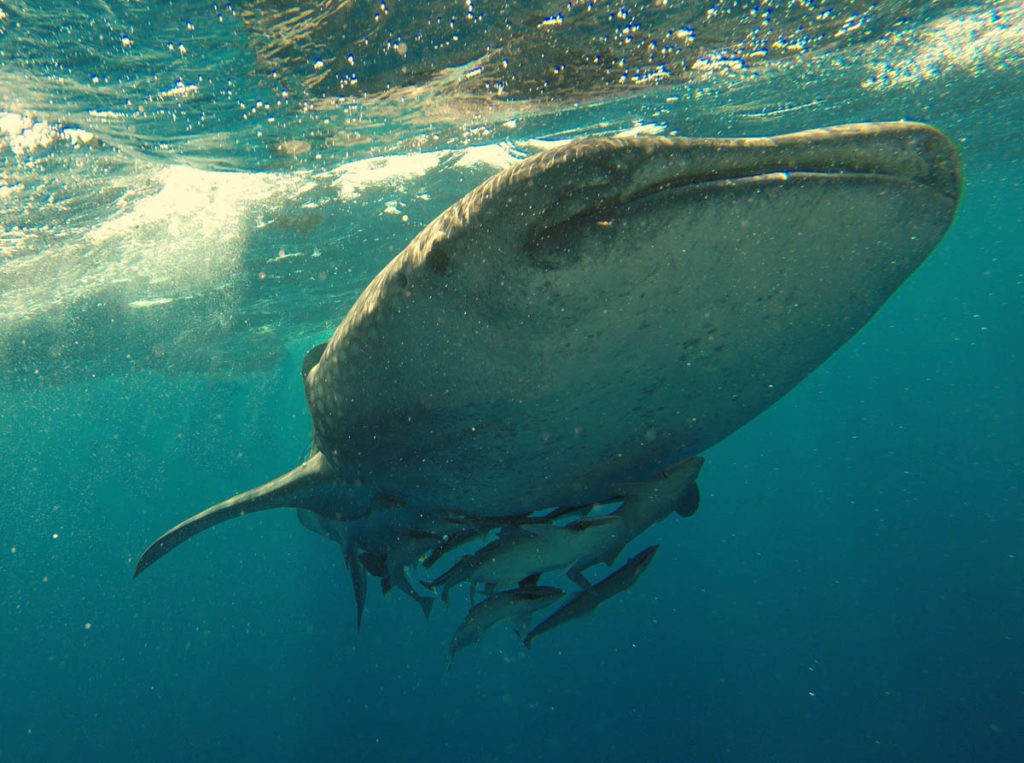
Probably the most popular place to dive in Koh Tao is Chumphon Pinnacle. About a 30 minute boat trip from the coast lies this dive site with beautiful rock formations. It boasts great visibility and is home to a big array of fish from angelfish to barracudas and batfish. Chumphon Pinnacle is usually visited by people taking their advanced open water dives as it can be visited to depths of 30m and more. If you visit here at the right time of year, you may also see a Whale Shark!
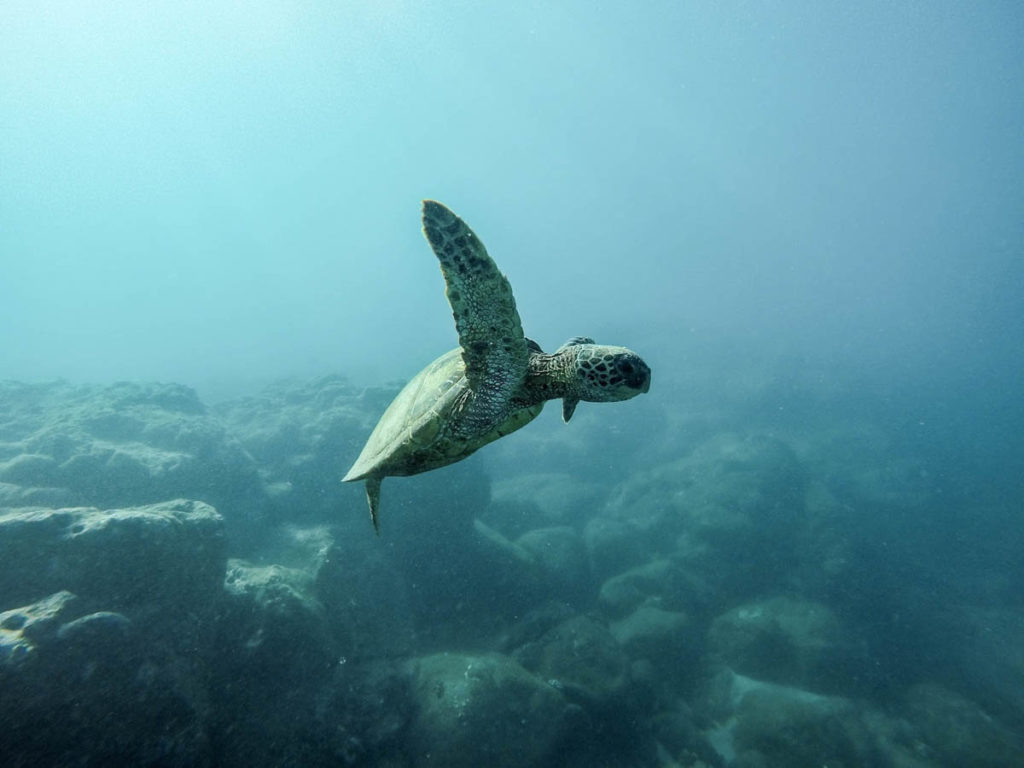
Another popular dive location is White Rock. There is a high chance you’ll visit here on your open water course, as it’s located just off the main beach – Sairee Beach. The diving ranges from 1m to 20m and is home to an array of beautiful fish and it’s also one of the most popular places to see the giant green turtles! I saw one recently which was about 1.5m in length and likely 50+ years old.
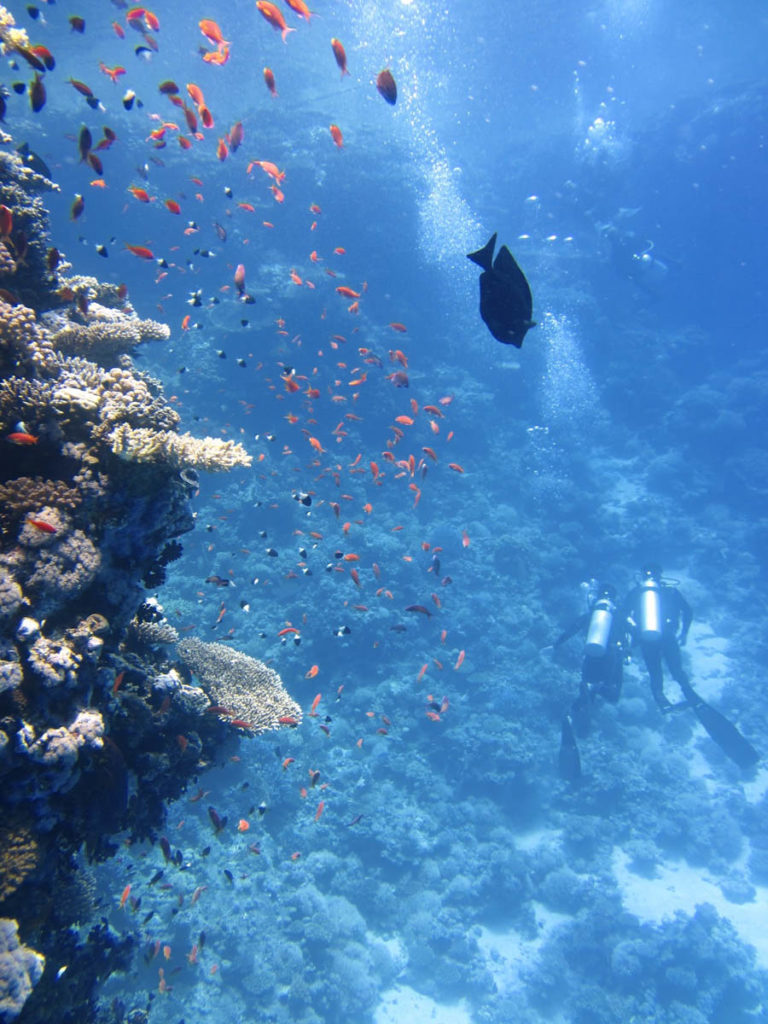
The Twins is another popular location you’ll likely visit on your open water course. It’s situated in the bay between Koh Tao and a neighbouring island called Koh Nangyuan. It is home to lively coral and limestone and granite boulders. Areas of the site are artificially made to help protect the marine life and to promote new coral growth. You’ll also find a shipwreck and an underwater forest called the Japanese Flower Garden, there is also supposedly a giant octopus that lives in the area, although I’m yet to spot it!
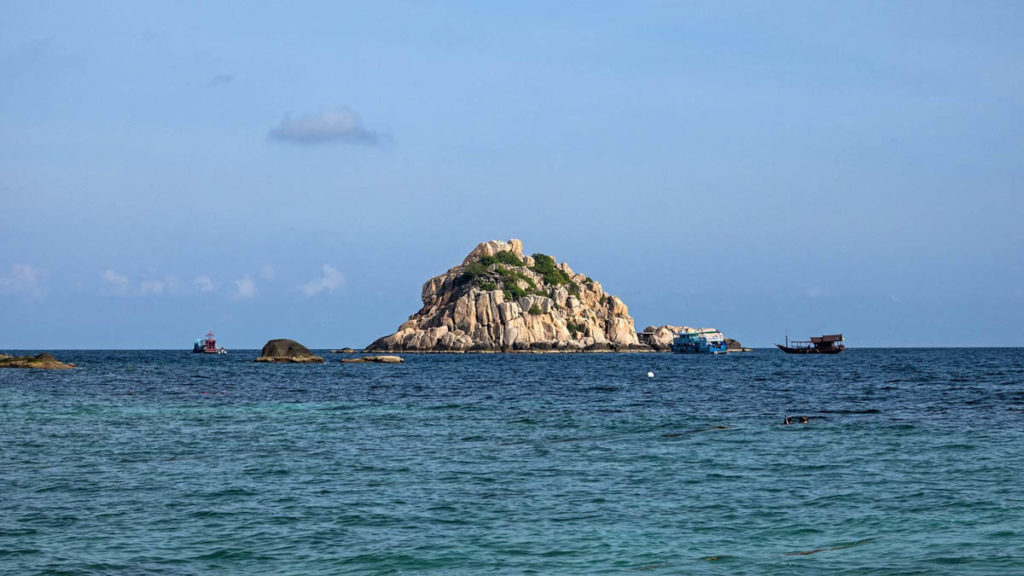
Another site frequently visited on your open water course (and one of my favourites) is Shark Island, It gets it name from the fin like appearance of the rock formations that form the islands peak. Although I have seen numerous reef sharks just off the coast, so it’s definitely home to them as well – don’t worry reef sharks are harmless to humans and will leave you alone. You can also see snappers, moray eels, sea snakes and barracudas around shark island.
These are just some of my favourite spots, although there are many many more around Koh Tao, check out the dive itineraries before you book your course, and go where you want!
Do’s and Don’ts for first time divers
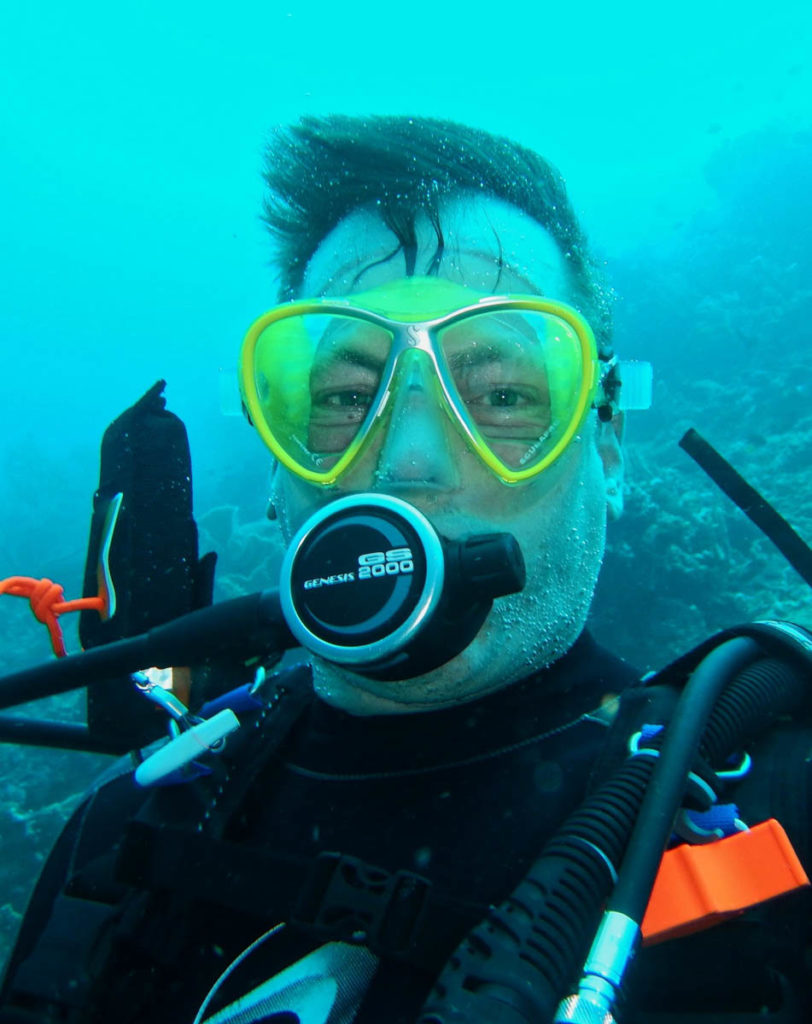
- Respect the marine life and coral – Many people don’t know that coral is actually a living organism. Please don’t touch and coral, always ensure you aren’t kicking any coral with your fins whilst in the water and never stand on it!
Never touch any fish, turtles or other marine life. There are a couple of reasons here, the first is that you may harm it, humans carry many bacteria on their body and hands which are very bad for marine life as they aren’t exposed to these bacteria regularly like humans. Another reason is your own safety, many underwater fish, especially those in tropical areas can actually be poisonous if touched or if you get bitten. If you stay a good distance away from the marine life, you’ll never have an issue.
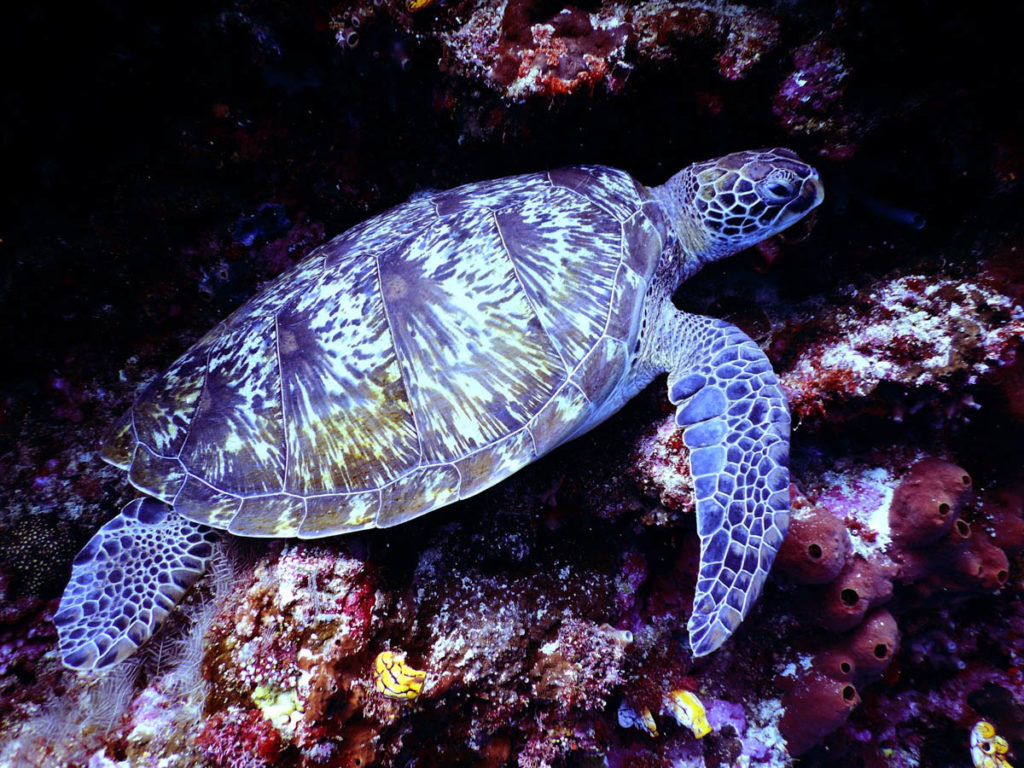
- Use reef safe sunscreen – This is a topic which is finally getting some more exposure. Coral reefs across the world are dying due to pollution, climate change and largely the chemicals found in sunscreen. Please ensure you wear sunscreen which doesn’t cause any chemicals which can damage the corals! You can find more information on reef safe sunscreen from here.
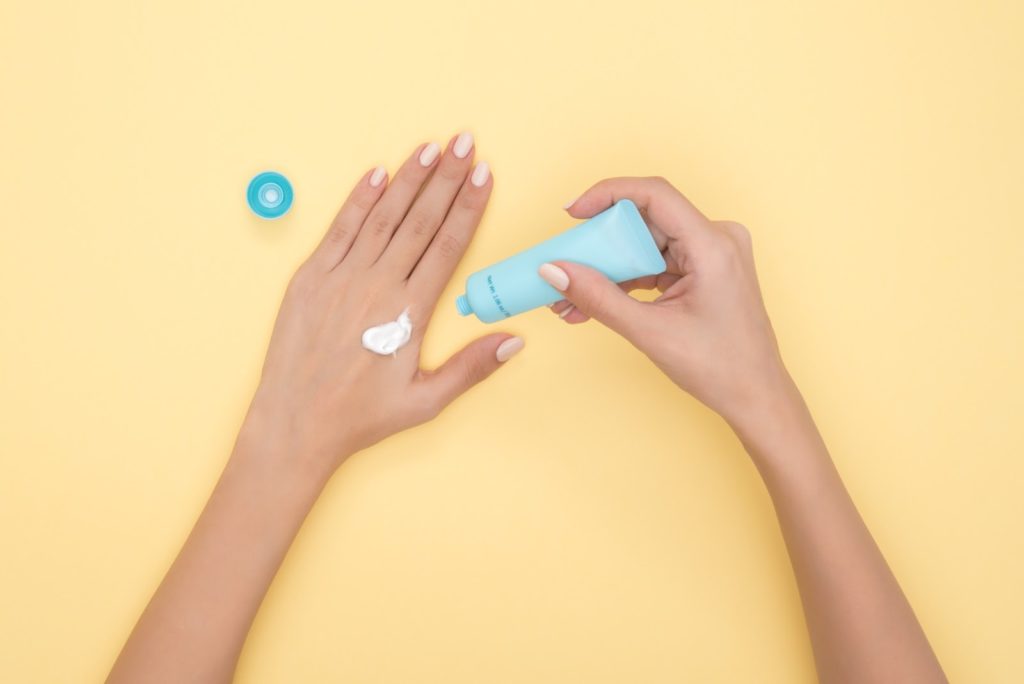
- Don’t take anything home with you – This applies to everything you see whilst scuba diving and on the beach. E.g. shells, coral, starfish. Some countries enforce strict laws if people are caught doing so. Remember you’re there to enjoy the beauty of the underwater world, leave it for someone else to see!
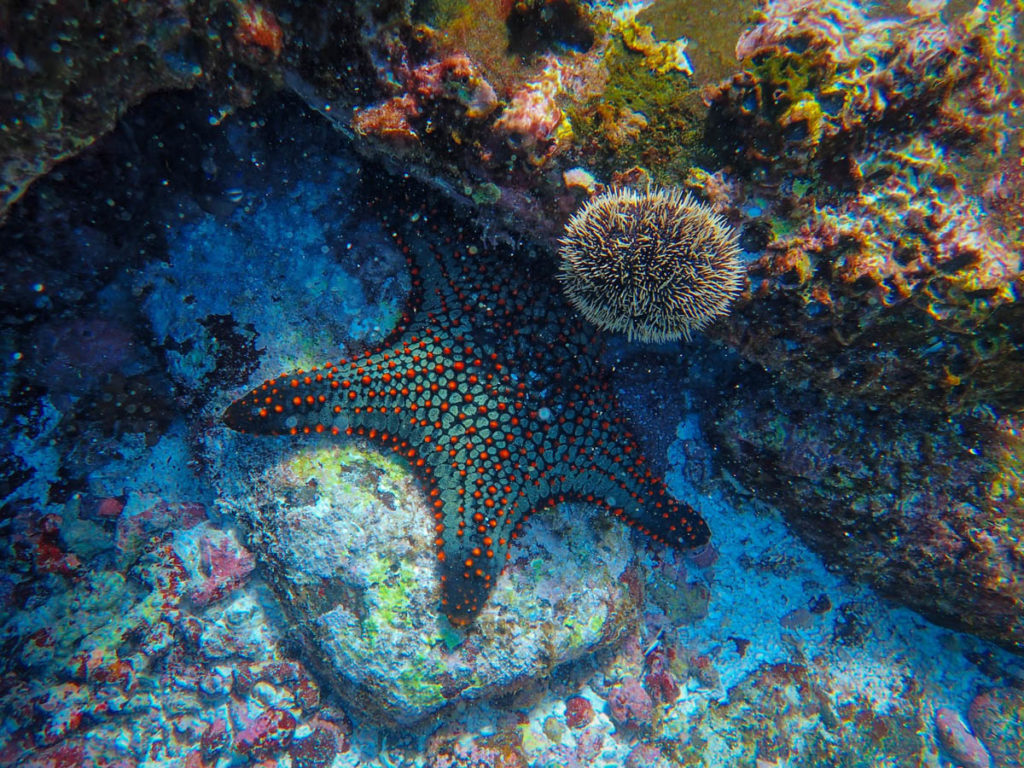
I think that pretty much covers everything you’ll need for your first time scuba diving in Koh Tao! I hope you found this article informative and I hope to see you in Thailand! If you need more information then feel free to get in touch with me at my blog here.
